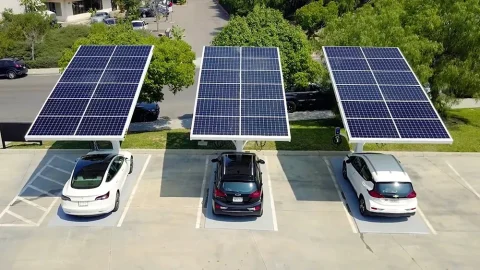Introduction
Did you know the U.S. generates over 400 million dry tons of biomass each year, including crop residues, forest waste, and organic byproducts? According to the U.S. Department of Energy’s Billion-Ton Report, a significant portion of this waste could be tapped for energy without affecting food production or land use.
So why are we still sending so much of it to landfills? In this blog, we break down how to make a biomass from everyday waste materials and how this feeds into clean biomass power generation.
How to Make a Biomass: The Go-To Guide for Eco-Friendly Power Generation
Biomass refers to materials like plants, crops and animal waste that can be changed into energy. The point of making biomass is to turn waste materials from woods and farms into a new source of clean energy. It provides an eco-friendly solution for transforming routine waste into energy for homes, businesses and populations.
Methods to Make Biomass from Everyday Waste
Having understood what biomass is, we can now see how it’s prepared. Converting what we throw away into usable biomass sounds hard, but it can be easily done in a series of simple steps.
Here’s how the transformation unfolds.
Step 1: Identifying and Collecting Biomass Materials
The first step is to decide what waste you intend to recycle. Biomass feedstock includes things like wheat straw, sugarcane bagasse, sawdust and wood chips from the forestry sector. You can also compost organic waste that comes from your home. It all comes down to getting materials that are both plant-based and will decompose or burn easily. Try to stay away from plastic, metal and chemically treated wood. After collection, the materials need to be kept dry so they stay secure and have the best energy value.
Step 2: Drying and Size Reduction
After gathering, biomass tends to be wet and must be dried before being used further. It can be left in the sun to dry or speeded up by using drying machines. Once everything is completely dried, it is ground up into small pieces by using chippers or shredders. It is much simpler and safer to deal with smaller particles, as they burn or convert easily and ensure a more consistent energy output in large systems.
Step 3: Choosing the Right Conversion Method
Now comes the crucial step, turning this processed waste into usable energy. This can be done in several ways depending on the type of material and the setup available.
Combustion
Combustion is a traditional option where wood or crop materials are burnt to make heat. The fire from firewood or coal is used to operate turbines for generating electricity and also to fulfil basic tasks through cooking and heating. Despite their popularity because they are easy and cheap, wood stoves do give off emissions, but they are updated with new energy-saving controls.
Gasification
Gasification is the process where biomass is heated in a poor oxygen setting to turn it into syngas, a rich fuel. This syngas serves as fuel to power engines or can be changed into electricity. It’s much cleaner than combustion and perfect for places that need energy on demand and lower emissions.
Anaerobic Digestion
In this process, bacteria are used to decompose organic waste such as manure and leftover food, all while depriving them of oxygen. What’s left is biogas that may be used as fuel along with a byproduct slurry that functions as fertilizer. It is particularly useful for agricultural areas and systems that handle waste.
Pyrolysis
Pyrolysis is a method where bio-oil, syngas and biochar are produced by heating biomass without oxygen. While bio-oil and gas have a lot of energy, biochar both enhances soil and captures carbon. This method has great potential and can be used for various purposes as it continues to grow.
Step 4: Pelletizing or Briquetting
After conversion, biomass is commonly made into functional compact fuels such as pellets or briquettes. They take up less space, are simpler to manage and burn much more easily. For home use, materials are made into little pellets, whereas for large-scale use, they create briquettes. This final step allows biomass to serve as a dependable, pollution-free source of energy for multiple uses.
FAQs
1. Can I use garden waste when learning how to make a biomass?
Absolutely! You can use dry leaves, small branches and grass clippings as excellent raw materials when trying to make a biomass. Just ensure that your materials are dry and do not have plastic or chemical residue.
2. Is it really safe and lawful to make biomass energy at home?
Most countries allow individuals to create their own biomass fuel for use in heating or cooking. But it is important to always follow safety measures.
3. What makes composting different from biomass?
Composting helps organic matter turn into rich soil, while biomass turns the same waste into energy. Composting is helpful for gardening and biomass aids in making electricity. Their motives are different, but both help to decrease waste and keep the environment safe.
Final Thoughts
The truth is, waste has never been worthless; it just needed the right attention. Now that you know how to make a biomass, the next move is yours. Power is, quite literally, in your hands.
That brings the focus to you: have you tried making biomass before? Or are you interested in trying it out soon? Share your stories or doubts in the comments and join the conversation.
I






